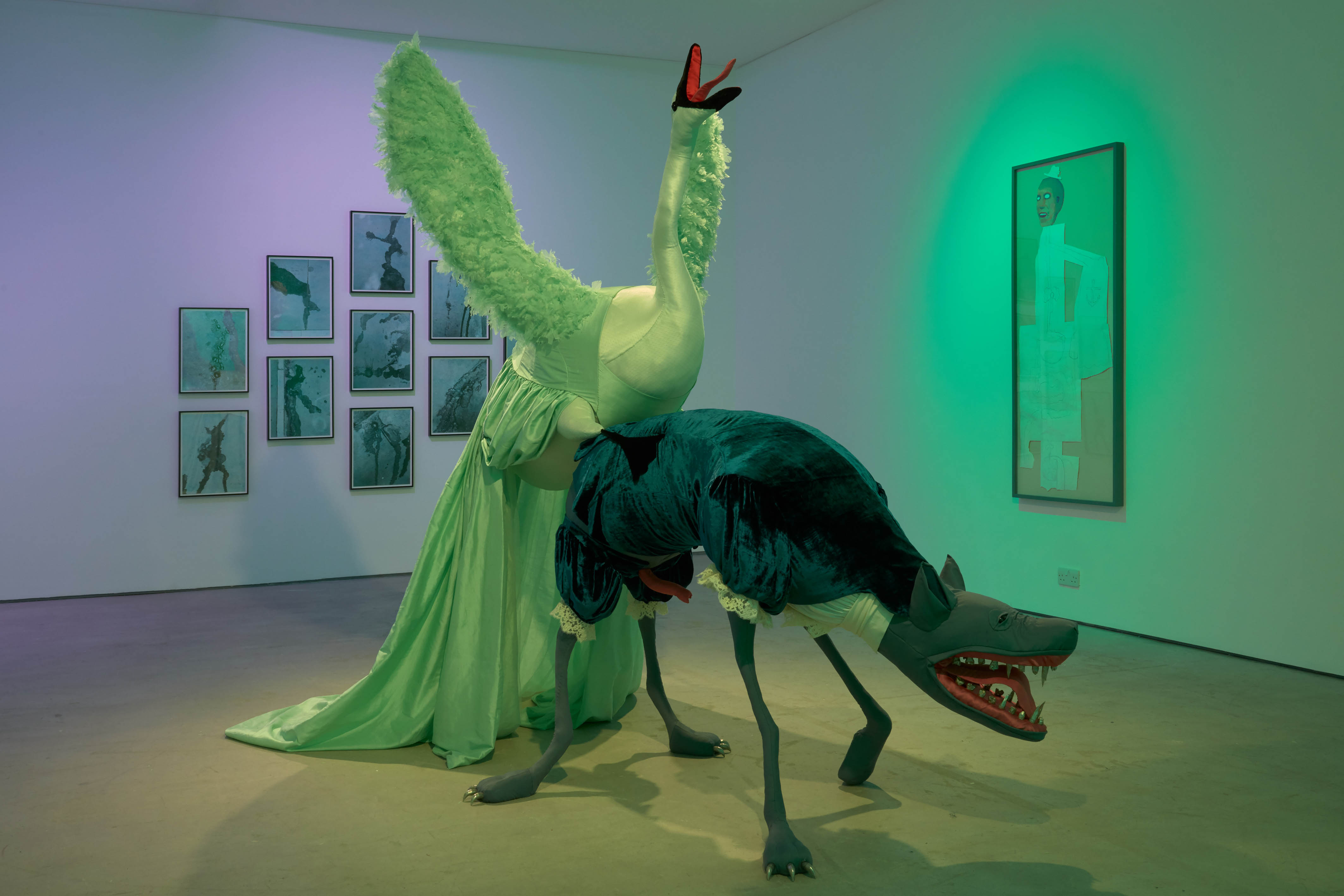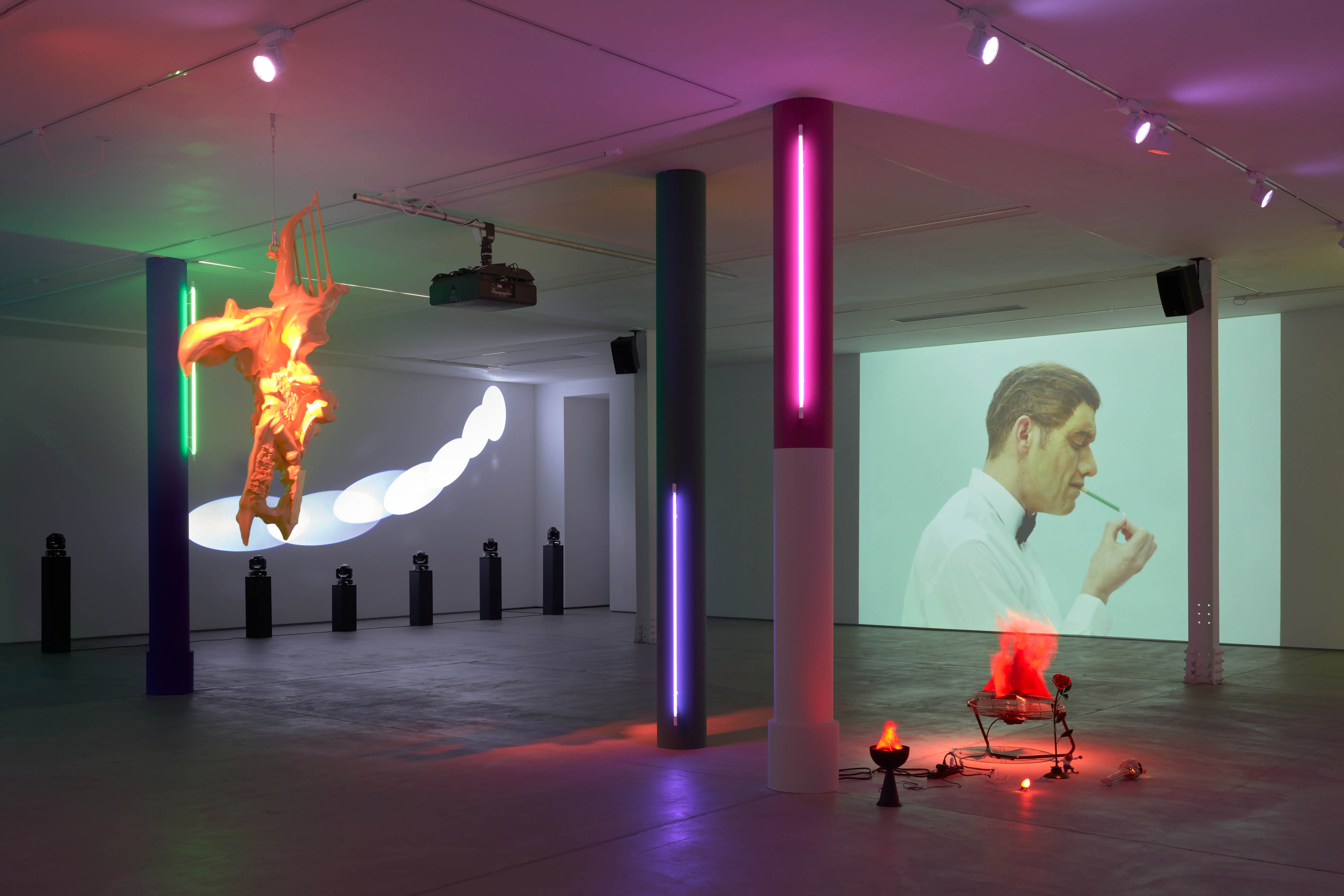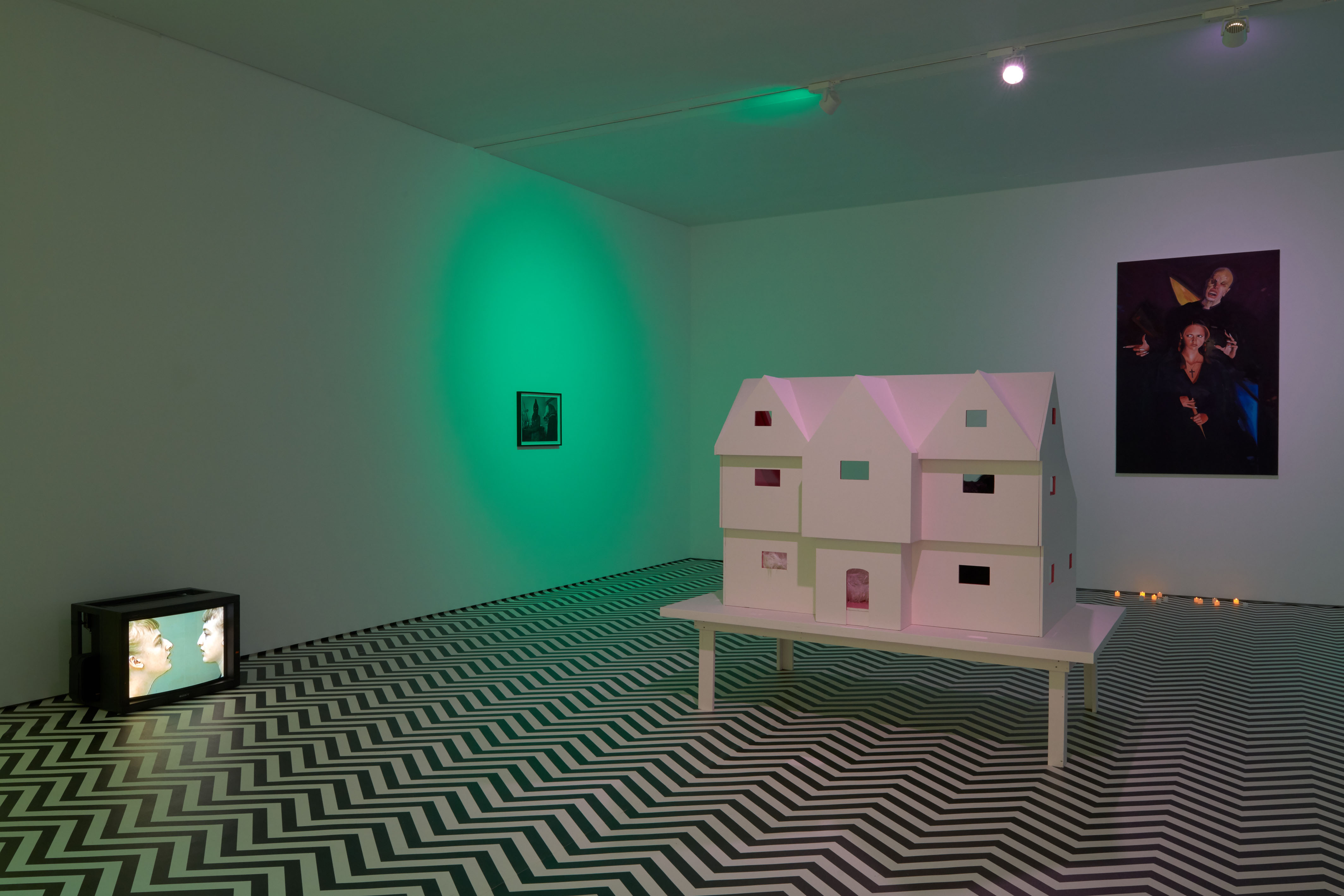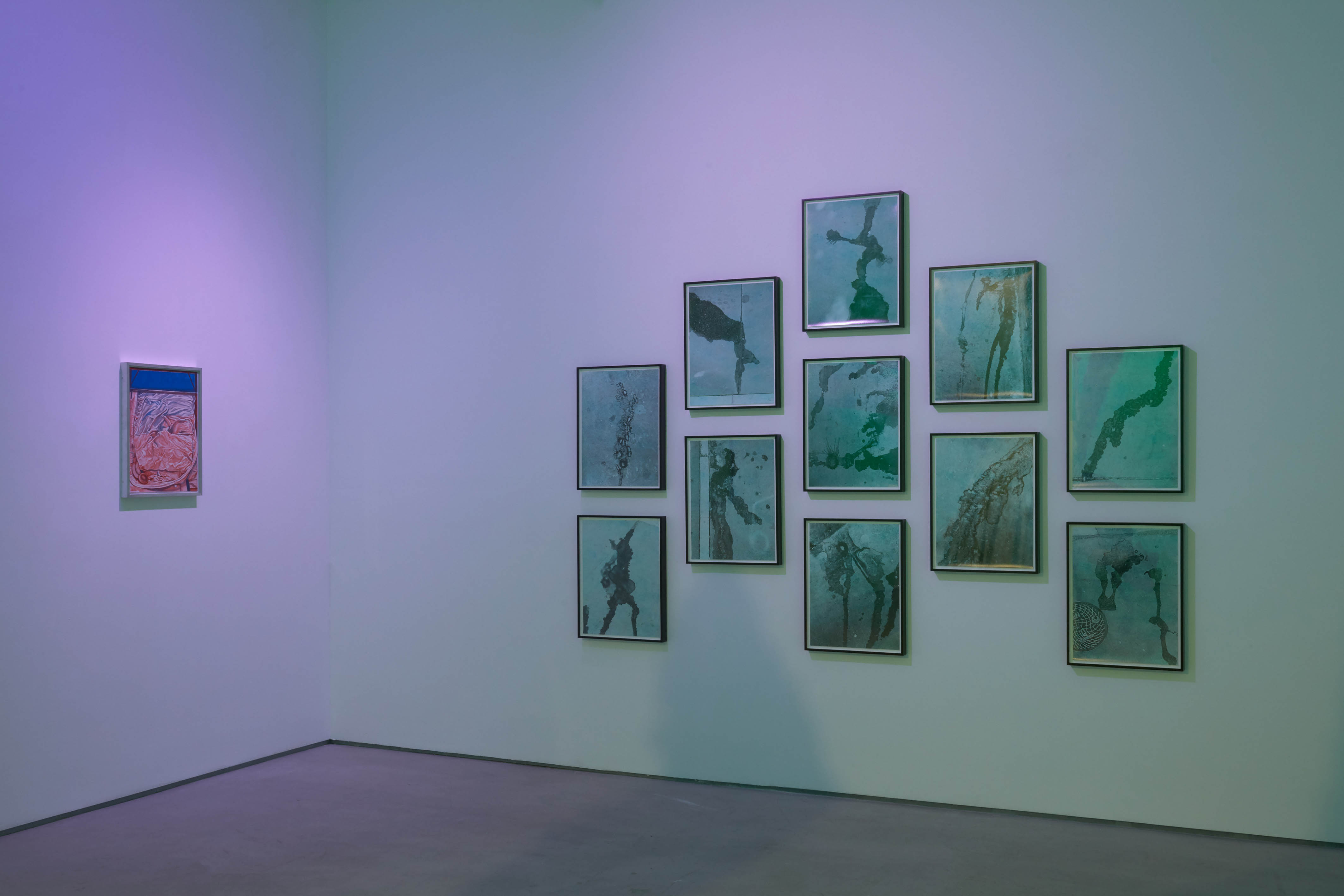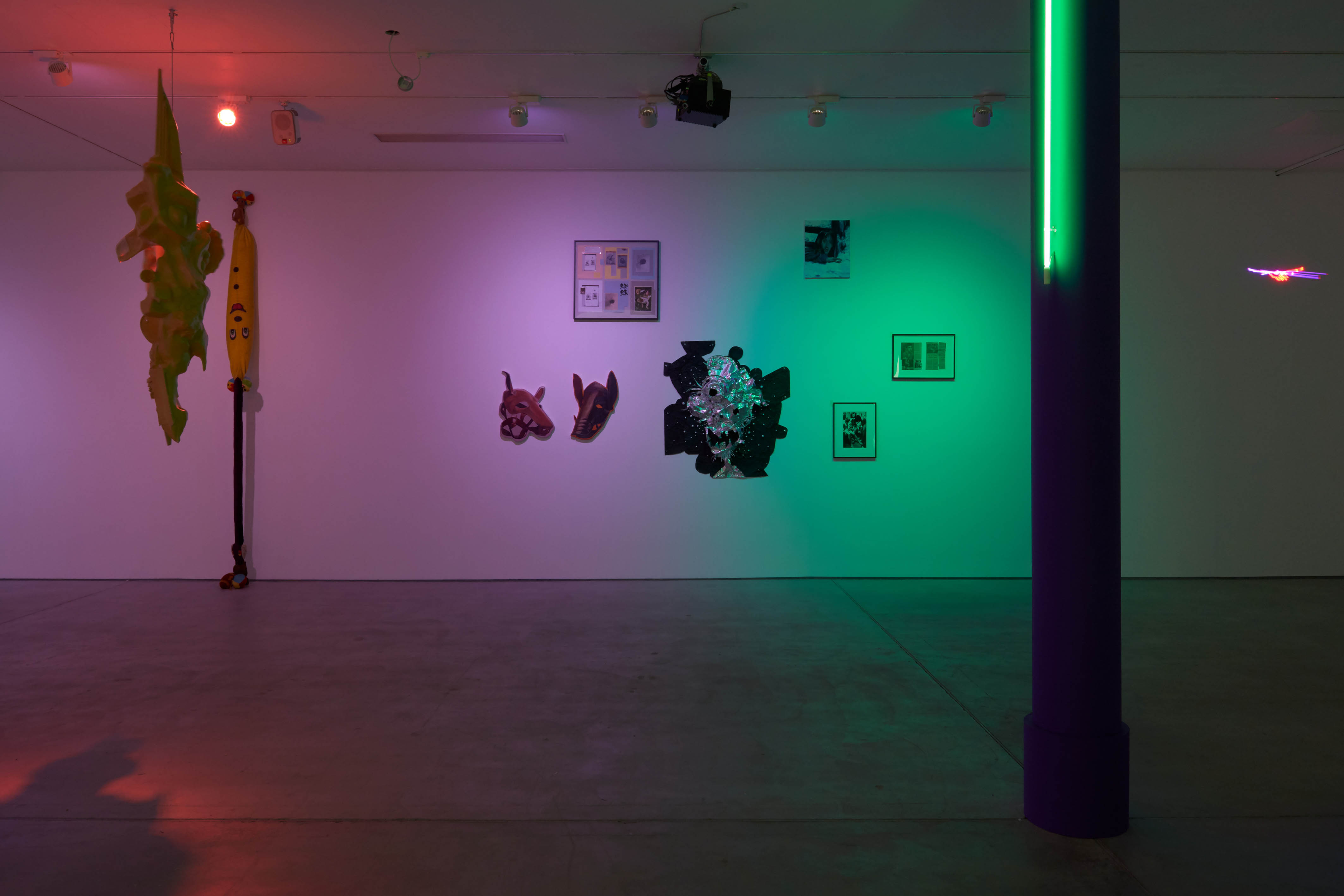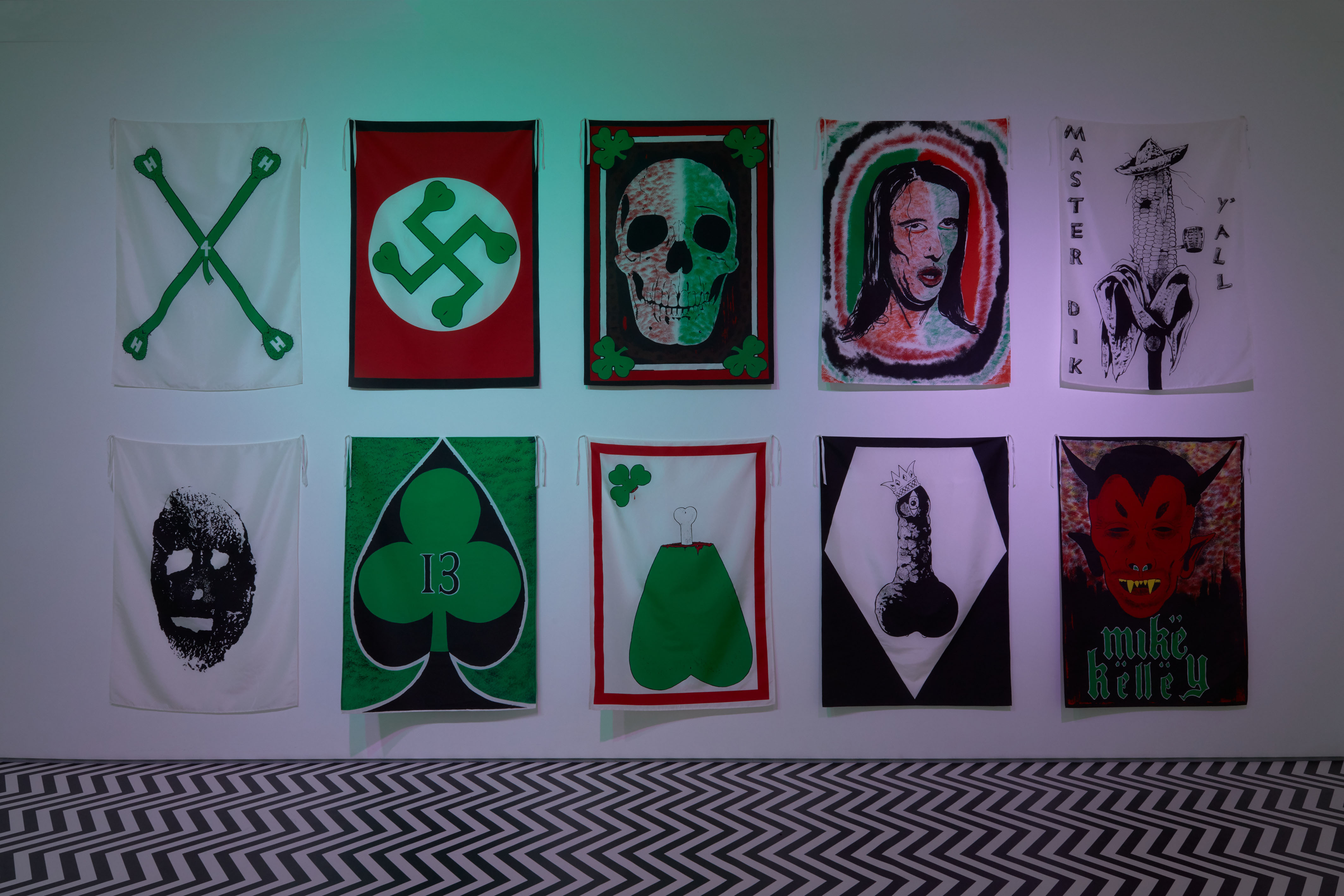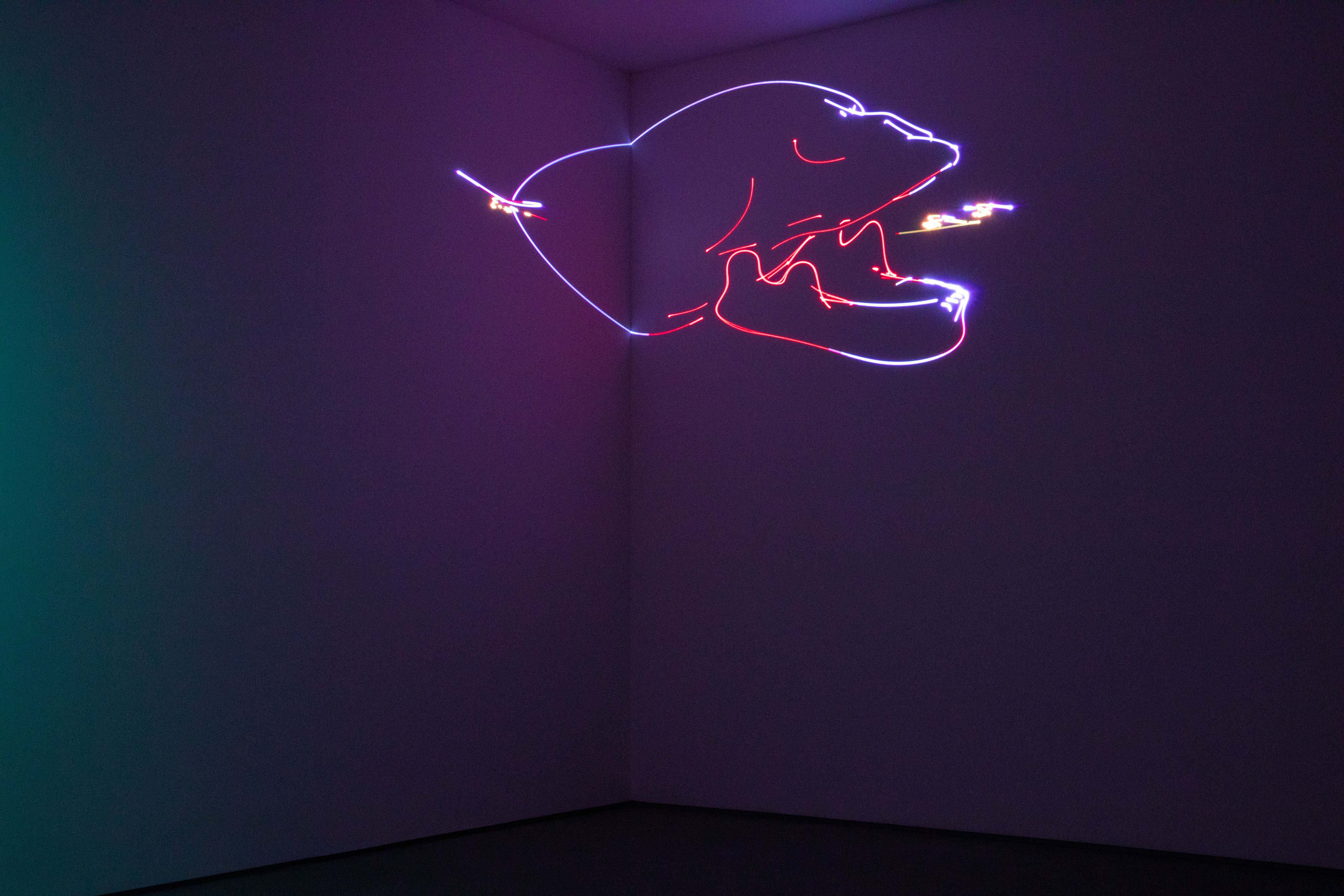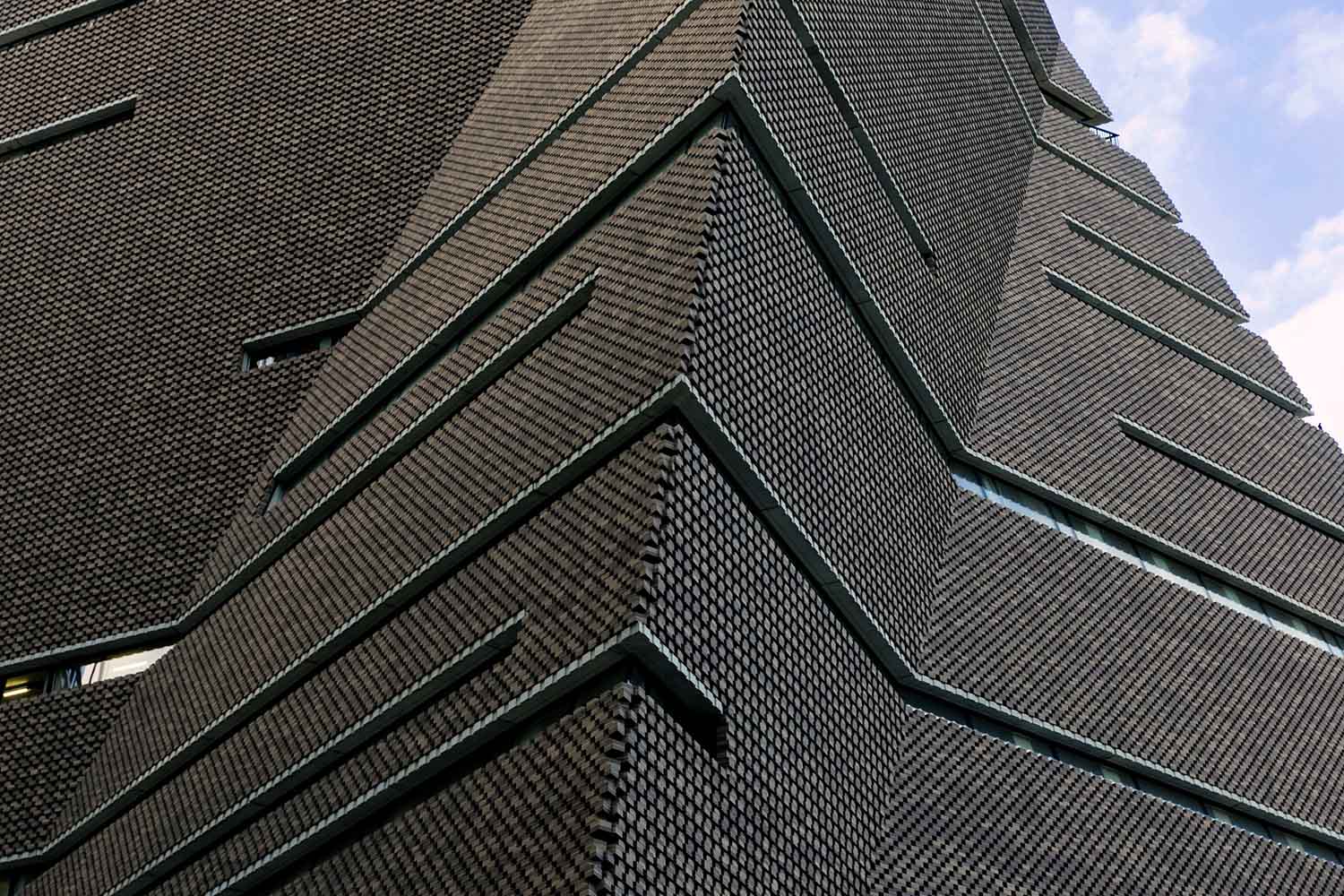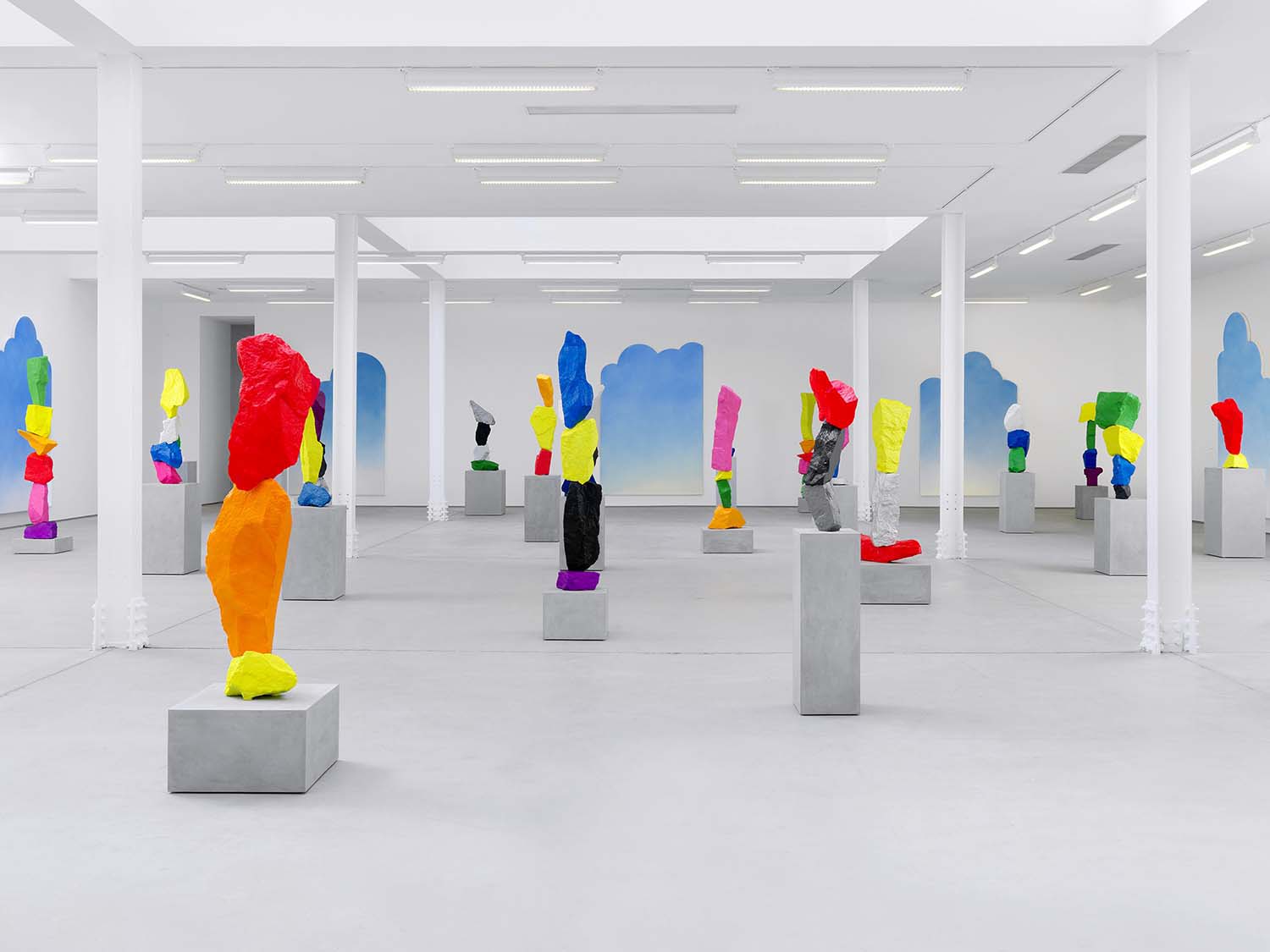Charlie Fox, author of the spellbinding collection of essays This Young Monster (2017), has created an exhibition that — with its (evil) twin presentation at Rodeo — offers a complex exploration into deviant identities, unconventional bodies, and historic trauma.
Green-and-pink-hued lights fill the gallery space with a ghoulish presence, and a black-and-white chevron floor pattern evokes the “red room” in Twin Peaks, seemingly transposing the exhibition into an alternative dimension. Popular culture references abound, including Sam McKinniss’s portraits of horror heroines Buffy the Vampire Slayer and Winona Ryder as Lydia Deetz in Beetlejuice, whichare accompanied by lit votive candles below.
What is a haunted house if not the material externalization of our unconscious anxieties and fears? Sue de Beer’s Witch House (2019) is a model replica of an existing building in Salem, Massachusetts— notorious for its seventeenth-century witch trials — where the artist grew up. Its dollhouse-pink interior is inhabited by costumes for a satanic vampire bat and a ghostly white Borzoi hound — an unlikely pair waiting to come to life. Like an otherworldly presence causing physical disturbances, Claude Wampler’s whispering voice Kinderkill (2019) emanates from an electrical outlet, softly inciting acts of violence.
An early video by de Beer, Making Out with Myself (1997), portrays the artist kissing her passive doppelgänger, an act of profound yet impossible intimacy. The monster is a familiar entity made strange, unheimlich —a hybrid that mystifies a sense of identity. Marianna Simnett’s chimeric sculpture portraying the implausible copulation of a swan and hyena in fairytale costumes is disturbingly magical and brutally violating. Incongruous internal and external body parts are brought into a perverse continuum in Mike Kelley’s “HermaphroditeDrawings.”
In this context, the sexual promiscuity and drug abuse in Larry Clark’s 1970s homoerotic images of teenagers in Tulsa, Texas,speak of the destructive and out-of-control self as a threat to social order. Alex Da Corte’s video Slow Graffiti (2017) creates an idiosyncratic reflection on the miserably inadequate and lonesome nature of the monster by referencing Jørgen Leth’s elegant study The Perfect Human (1967) to present an artfully disfigured actor in partial Frankenstein prosthetics.
As the promises of accelerated technological transformation narrow the divide between humans and machines through biohacked longevity, augmented bodies,and symbiosis with AI, making the uncanny valley ever more real, Fox’s exhibition resonates with our anxieties regarding the increasingly unstable boundaries surrounding consciousness and humanity. These monsters act out timely, cautionary tales.

